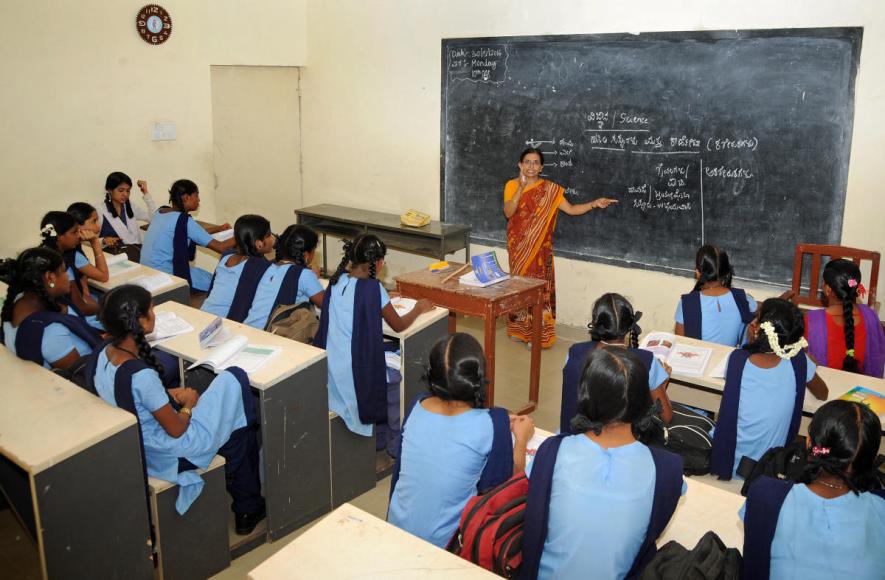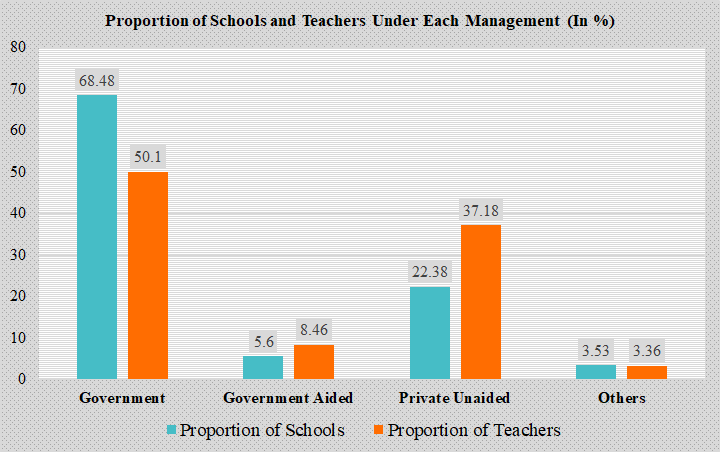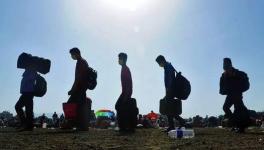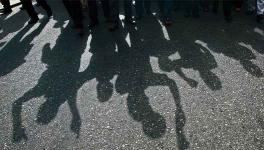Government Schools Have Much Lesser Teachers Compared to Private Schools, Shows UDISE+ Data

Representational Image. Image Courtesy: Deccan Herald
Government-run schools have a significantly lesser proportion of teachers when compared to private unaided schools, according to the Unified District Information System for Education Plus (UDISE+) Report for 2019-20.
There are a total of 15,07,708 schools in India, out of which 10,32,570 are run by the Union Government and state governments, 84,362 are government-aided, 3,37,499 are unaided private schools while 53,277 are run by other organisations and institutions.
According to the UDISE+ report, published by the Department of School Education & Literacy of the Union Ministry of Education, a total of 96,87,577 teachers work in schools across the country, out of whom 49,38,868 work in government schools, 8,20,301 work in government-aided schools, 36,02,625 work in private schools, and the rest work in other schools.
While private unaided schools comprise 22.38% of the total number of schools in India according to the report, 37.18% of the total number of teachers work in private schools. The majority of schools across the country are run by the Union Government and state governments. Government schools comprise 68.48% of the schools in India. These schools, however, had only 50.1% of the required teachers. Government-aided schools, which make up 5.6 per cent of the total number of schools, had 8.46 per cent of the total number of teachers, while other schools had 3.36 per cent.

The National Education Policy 2020 mentions that a pupil-teacher ratio (PTR) of under 30:1 will be ensured at the level of each school. While this is true for most states, some states have a much higher ratio. At primary level, Bihar performed the worst, with a PTR of 55.4. Delhi (32.7) and Jharkhand (30.6) were the only two other states with a PTR of more than 30 at the primary level. While all states had a PTR of under 30 for the upper-primary level, the situation was not as good for secondary and higher secondary levels.
For the secondary level, the states with a PTR of above 30 were Bihar (51.8), Jharkhand (33.7), and Gujarat (32.6). For the higher secondary level, the states with a PTR of above 30 were Odisha (66.1), Jharkhand (54.5), Uttar Pradesh (40.5%), Maharashtra (37), and Madhya Pradesh (34.6). However, the report does not provide the PTR separately for government and private schools.
According to UDISE, out of the total 15,07,708 across the only 4,51,933 – 30% of the schools – had at least one teacher trained to use a computer and teach while using it. This is at a time when because of the ongoing COVID-19 pandemic, online classes have become the norm and children have not stepped inside their schools in over two years.
The data shows that the government remains indifferent to improving the conditions of government-run schools. It is not surprising that parents prefer to send their children to private schools if they can afford it, given that the private schools have better infrastructure, more resources, and greater manpower.
Get the latest reports & analysis with people's perspective on Protests, movements & deep analytical videos, discussions of the current affairs in your Telegram app. Subscribe to NewsClick's Telegram channel & get Real-Time updates on stories, as they get published on our website.
























